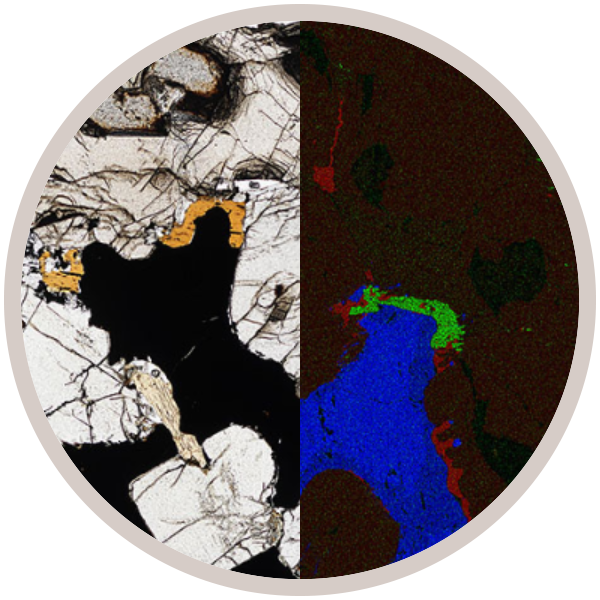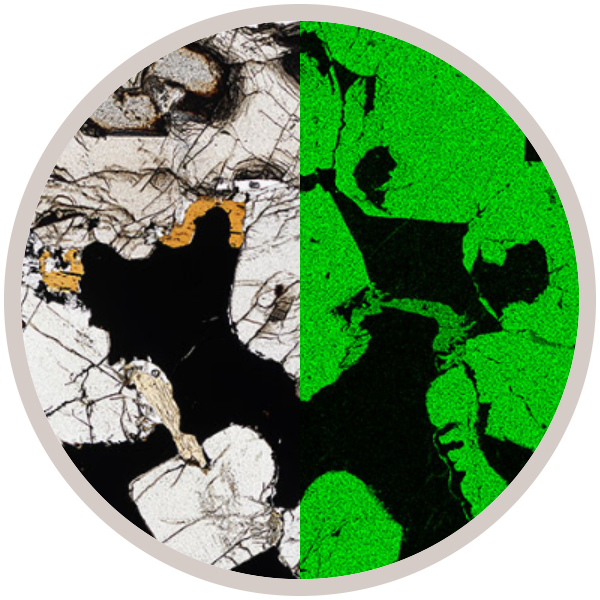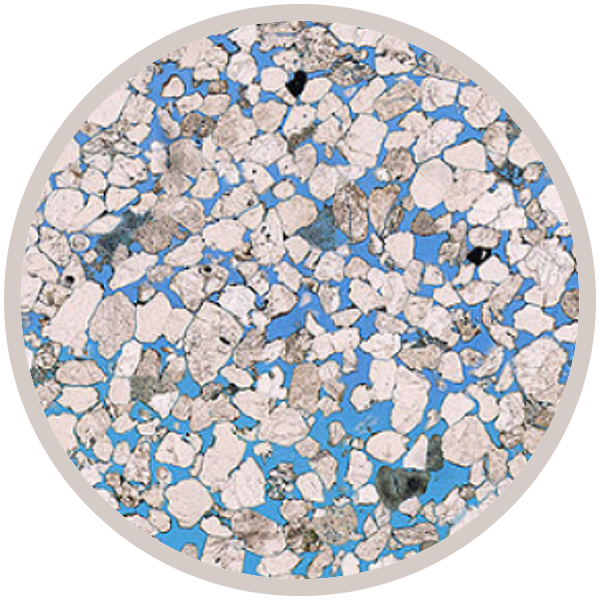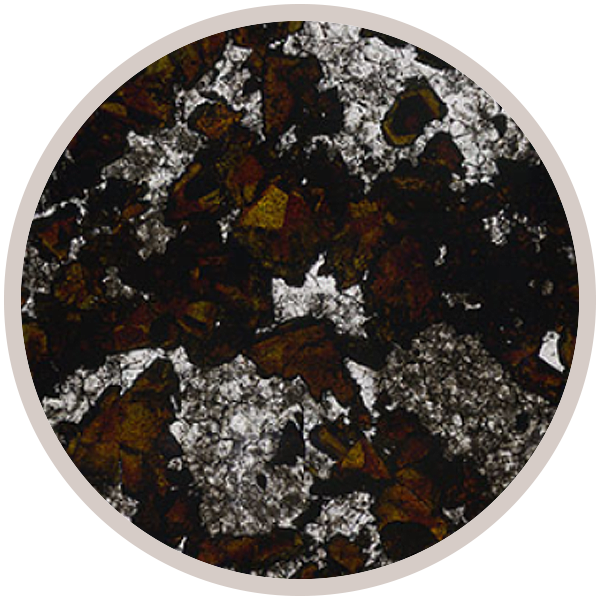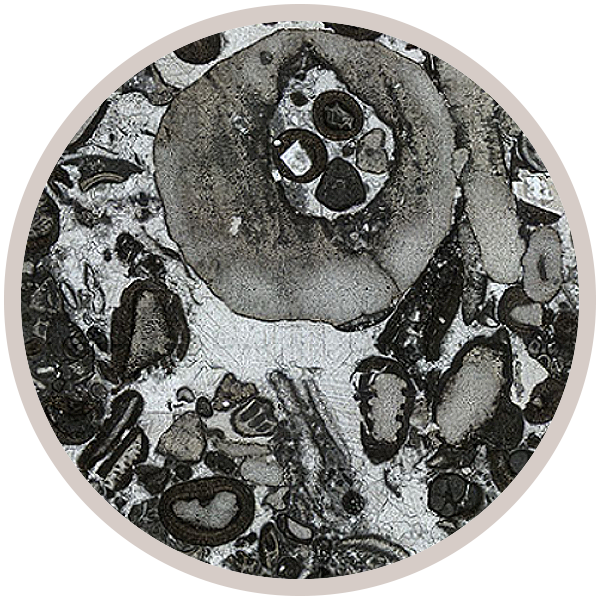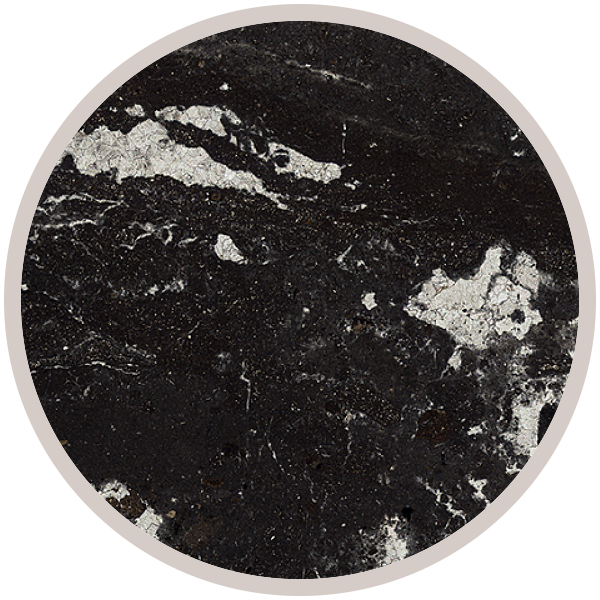
Fact sheet
This sample comes from the narrow northeast end of the Ox Mountains inlier, the same region as the metabasite garnet amphibolite P5218 in this collection. These rocks record a history of intense metamorphism within the high-pressure granulite facies, but the age of the protoliths and the age of metamorphism are uncertain. It is possible that the rocks are Dalradian, and that metamorphism occurred early in the Grampian orogenic event, but conventionally the extreme grade of metamorphism, and the clear signs of Grampian retrogression, has led to the view that the rocks are basement to the Dalradian Supergroup. Millimetre-sized garnet, kyanite and opaques are associated with ribbons of optically continuous quartz. K-feldspar, plagioclase and biotite are also present. The last three are mostly fine-grained and appear to have partially recrystallized after having been severely strained (the rock may once have been mylonite).
Rotation 1 - Nice kyanite with both cleavage traces sharp. Kyanite has straight extinction to the elongation. Rotation 2 - Strain shadowing and twinning in kyanite
A group of iCRAG members (UCC, TCD, NUIG and UCD) in partnership with The Open University have created a new collection of Irish rocks and associated learning materials for the Virtual Microscope of Earth Sciences.
The project which is entitled 'The Geoscience e-Laboratory (GeoLab): Developing Digital Teaching and Learning Resources for the Virtual Microscope' seeks to develop open access teaching resources in the form of interactive exercises and assessment rubrics for the Virtual Microscope. Find out more about the project at the GeoLab website.
The Collection was created using funding from the Faculty of Engineering, Mathematics and Science at Trinity College, Dublin, and the National Forum Teaching and Learning Enhancement Fund. One sample (Merensky Reef) showcasing x-ray element maps in addition to the usual PPL/XPL/REF images was funded by Prof. Balz Kamber's MetalIntelligence EU training network grant.

